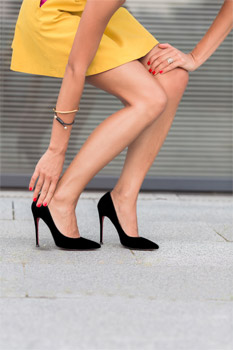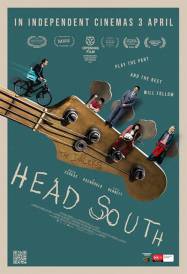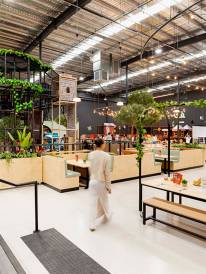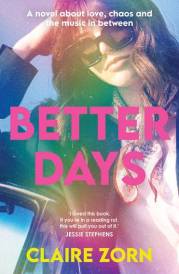10 Bad Shoe Decisions That Are Damaging

10 Bad Shoe Decisions That Are Damaging
They're the shoe decisions that are doing real damage. From trendy sports-luxe runners to our unofficial comfort shoe of the nation, thongs, Australians are making bad decisions every day that can result in all-over body ailments like plantar fasciitis (heel pain), lower back pain, nerve problems, misaligned hips and bad posture.
One of Sydney's leading heel pain specialists, sports podiatrist Karl Lockett of Sydney Heel Pain, says, 'Among the patients I see every day, more than half are suffering pain and injury not just with their feet, but also other parts of the body, from their knees, to their hips and backs. Bad decisions in their choice of footwear is frequently a contributing factor, and when pre-existing conditions such as over-pronation are present, it exacerbates the problems even further."
It is estimated that around 70 per cent of the population suffer from an over-pronating foot¹ – where their foot rolls inwards excessively – which is then worsened when wearing the wrong shoes. But many are unaware of their condition and are therefore not addressing this when making their choices in footwear.
'A tell-tale sign of over-pronation is an uneven wear pattern on the soles of your shoes – check your current shoes to see if the inner edges are more worn out more than the outer edges. Ideally, the wear pattern should be even. If it's not, you need to address the problem with orthotics, and avoid bad shoe decisions," says Karl.
Whether you have an over-pronating foot or not, here are 10 bad shoe decisions that we're making, whether it's footwear for social occasions, work, or sport.
Karl Lockett's Top 10 Bad Shoe Decisions Made By Aussies
High Heels. High heels are sexy, and many women would never give them up, but the trade-off can be painful, putting pressure on your lower back and knees. Worse than that, they create tight calf muscles, which often leads to other issues.
Consequence: Strained calf muscles are a precursor to Achilles tendonitis – if the Achilles tendon gets inflamed, it can take weeks to treat. Along with blisters, bunions, and possible nerve damage from pressure on toes, high heels (tight calf muscles) can also cause an unsightly and painful bony deformity at the back of the heel called a heel spur – which can be permanent. Not so sexy after all.
Karl's recommendation: A heel height of 2-3 cm maximum is ideal – however, it's not necessarily the sexiest heel height. If you like to wear high heels to work, wear a good walking shoe for the streets on your way to the office and then slip on the high heels at your desk. Your foot wants to have different heel heights and to work in all three body planes of the foot. If you wear heels for too long, be sure to stretch your calves for at least 30 seconds three times a day. Don't walk around in your high heels for any longer than three hours a day.
Stilettos. Stilettos have the same bad traits as above – but amplified! They throw way too much weight on a pinpoint and the thin heels offer little stability on uneven surfaces or staircases, making you wobble like a stilt walker. These seductive vixens of the shoe world often have narrow toe boxes too, adding to the pain factor.
Consequence: Again, these shoes can cause strained calf muscles and the evils of Achilles tendonitis. Also the higher the heel, the more prone the wearer is to ankle sprain, and a severe fall may risk osteoarthritis.
Karl's recommendation: Go with a chunky heel with an ankle strap instead. This offers a lot more stability, distributes weight more evenly, and lessons the risk of a fall. If you must wear a stiletto, don't walk in them for any more than an hour – only wear them for special occasions or dinners where you'll mainly be sitting, and then getting into a car to go home rather than walking to public transport.
Platforms. Chunky wedge platforms often have a rigid foot-bed, and the soles offer no flexibility; this throws off the biomechanics of walking.
Consequence: The platform puts pressure on the metatarsal bones if the heel area is much higher than the toe area, potentially leading to stress fractures if worn too much for too long. Calves will also get tight and can lead to plantar fasciitis.
Karl's recommendation: If you must wear a platform, a low one is ideal. Try to look for styles that have some cushioning in the foot-bed and choose soles that have some grip like rubber, over hard and slippery materials such as wood.
Ballet flats. Ballet flats are too thin and flexible, and don't afford your foot any arch support. If you have a high arch, then too much pressure will build under the heel and ball of foot.
Consequence: Your calf muscles and Achilles tendon have to work much harder, and may lead to plantar fasciitis – not to mention potential stress fractures and pressure point soreness.
Karl's recommendation: I see many patients with problems from wearing flats. Firm-soled shoes, like leather brogues, are best. In general, if your shoe is easy to fold back then it's not really giving you any support. If you have a high arch, you may still need orthotics to bridge the gap, even in a good shoe.
Thongs. They're a proud part of the Aussie national identity – but as with ballet flats, thongs feature no arch support, and are usually made of flat rubber or plastic.
Consequence: Beating the pavement with these flat flexible shoes all day is bound to result in pressure point soreness, and may even affect knees, hips and your back – all-over misery.
Karl's recommendation: There are some modified thong designs to look out for that feature a heel gradient and thicker, moulded arch support. Orthaheel are one of the bigger brands to offer some of these styles with quality moulded soles, as well as Fit Flops.
Minimal runners. The hugely popular minimal, lightweight running shoes trending both in the worlds of sports luxe fashion and the running world can seem comfortable to wear – but they're not designed for everyone. People carrying more weight or doing a variety of exercises beyond running such as crossfit or playing tennis should be wearing a shoe with more stability.
Consequence: If you're heavy and your foot over-pronates, you'll get more stress on the foot, and are more likely to develop injuries such as Achilles tendonitis and shin splints. This soft shoe can worsen pronation. If you pronate by 10 degrees and you wear a soft shoe, that pronation gets amped up to 20 degrees!
Karl's recommendation: Cross trainers tend to have more all-round stability – they are better for training that goes beyond running, like bootcamp, and for heavier people. Look for a shoe with a heel gradiant of 15mm for walking or running – this is less likely to contribute to injuries. You should look to spend $150 or more to get a good running shoe from the major brands, rather than cheaper brands trying to adopt the trend.
Maximal runners. These shoes are on the other end of the spectrum from minimal runners, offering the maximum amount of cushioning and a lower heel-to-toe offset, to promote a mid-foot strike. However, the heel height is higher in maximals than what podiatrists would usually recommend – around 32mm - and the extra cushioning doesn't suit everyone's bodies.
Consequence: Maximals can negate some of our natural biomechanics that protect us from the pounding of pavement, creating a false sense of security and running, counter to the benefits of the shock absorption in the cushioning. If you're just starting out with training and have instability in your hips and lower back, using these shoes prevents you from strengthening yourself into a durable runner – hence risking injury.
Karl's recommendation: Be sure to know your foot type and be reasonably well conditioned as a runner before you buy these. Proper strengthening and core work will ensure your running technique doesn't get affected negatively.
Lightweight canvas shoes. The classic Converse-style shoe has adorned many cool feet for decades – but they may not do your feet any favours. Their soles are very flat, without the arch support or heel grade of good running shoes, yet people tend to walk around in them all day as streetwear. The canvas top, also shared by other well-loved brands like Toms, aren't supportive like the mesh on running shoes or leather on a cross trainer.
Consequence: These can have the same effect as the ballet flat, causing pressure pain, Achilles tendonitis and plantar fasciitis (commonly referred to as Heel Spurs).
Karl's recommendation: There are many other brands of street shoes or walking shoes that combine style with substance. Look for lines like Adidas Originals that offer support as well as street cred. Reebok Classics are good too.
Rubber and Plastic. Some cheap shoes attempt to make rubber look like leather with a grain texture. Sometimes convincing, sometimes not – but always less than ideal, since these materials don't breathe or offer as much support.
Consequence: Rubber is too soft and rubber soles can wear out quickly. Plastic can restrict your feet, resulting in painful rubbing and blisters. Both of these materials are also more prone to harbouring sweaty conditions for bacteria to breed, since they don't breathe efficiently.
Karl's recommendation: Choose real leather over synthetic, the soles will last longer. Quality leathers are generally softer, without hard edges that can rub. With proper care they will also last much longer than the cheaper alternatives.
Sale shoes – that didn't come in your size. We've all been there. Just when we find the perfect shoes on sale, they've run out of our size. So we go ahead and buy that size smaller anyway, thinking they'll stretch. Instead, they just squeeze our poor feet into a tight, nerve-pressing space that our toes really don't appreciate.
Consequence: If you manage to power through the pain and wear shoes that don't fit for too long, then you run the risk of bunions (bone deformity), corns (soft tissue callouses), hammer toes (curl out of place), nerve irritation and neuroma (benign growth of nerve tissue).
Karl's recommendation: Just don't do it – sale shoes aren't saving you money if you don't end up being able to wear them properly. When you're feeling allured by a sale and a shoe you love, take down the style and research where else you may be able to purchase later in your correct size.
Good shoe decisions: Karl's 5 essential factors to look for when shopping for shoes
Now you know which shoes made the bad list, here are Karl's general tips when shopping so that you can choose the right features in your next pair.
Firmness: With your hands holding your shoe on each end, see if you can twist it one way at the bottom and one way at the top, to test the torsion. You don't want it to give too much to your twisting, so that it can support your foot when it rolls. If you can fold it in half, that's not a good thing.
Toe-box fit: Choose shoes with a toe-box that actually accommodates the width of your toes – if you feel a squeeze and your outer toes are pushed tight against the sides, move on to another choice.
Supportive heel: The heel should have a decent surface area, or width, to evenly distribute your weight (this is why chunky heels are best for high heels). Rubber-soled heels will help prevent slipping on smooth surfaces. Also make sure the fit of the heel works for you – any slippage when trying them on means they won't be practical to wear. Minimal spaces may be corrected with an adhesive silicone insert.
Ankle support: If you must wear heels, choose a chunky-heeled pair with ankle straps – they lend extra support while walking.
Quality materials: Always look for leather over synthetic materials – it lasts longer and breathes better.
MORE



